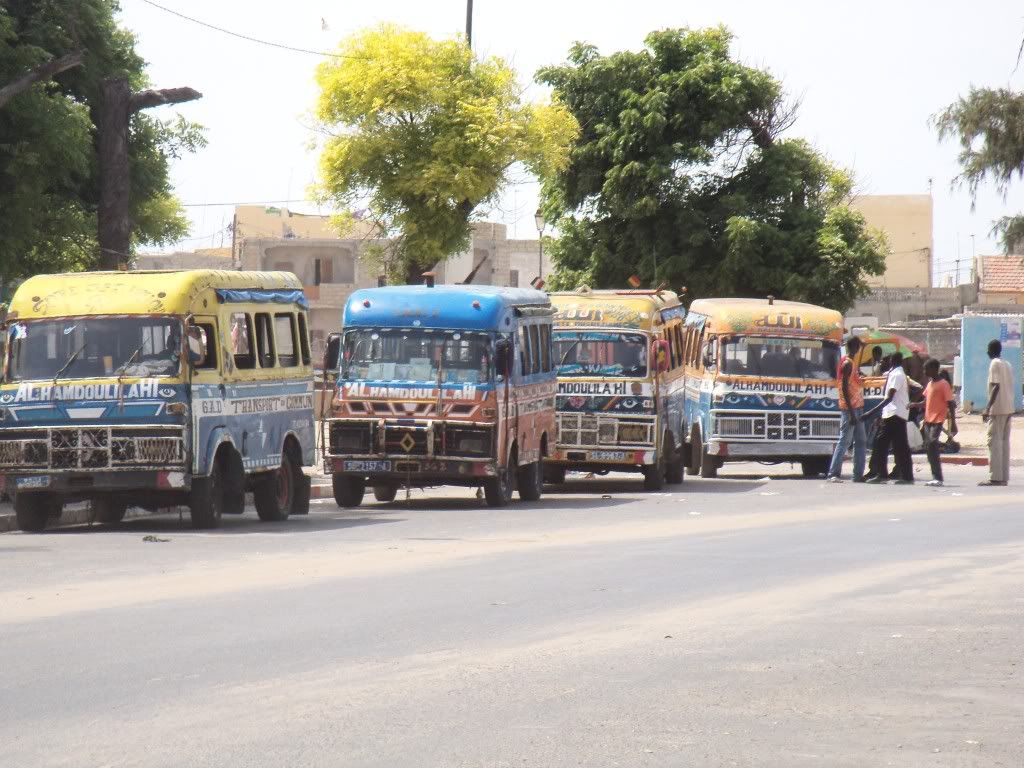Something I've been meaning to do a blog entry on is the topic of travel in Senegal. My story of accidentally visiting Keur Massar (the crowded, very un-touristy and dusty town located on the edge of Dakar) instead of Keur Moussa (the very tourist-friendly monastery that sells a delightful variety of Senegalese fruit-flavored alcoholic beverages and jams located just outside of Dakar) illustrates the constant occurrence of unexpected travel hiccups, especially for travellers who aren't familiar with the way public transport is organized here.
When I use public transport, I'm used to going online to find a bus, metro, or train schedule, and then using a map to find my way to the appropriate station. Before coming to Senegal, I considered myself quite self-sufficient when it comes to maneuvering public transport. Nothing I learned from the various trips I've taken around the states and a couple in Europe, or in my home state of Michigan (which is a joke, since public transport barely even exists there), however, even came close to preparing me for Senegalese travel.
Getting around Dakar is cheap enough: in general, you can take a taxi just about anywhere in the city with $4.50 being the most expensive ride. And that rate stays the same whether you're alone or sharing that taxi with three other people. Finding a taxi is also (almost) never an issue. I think one of my professors told me that Dakar is a city with one of the highest taxi to privately owned car ratios in the world. I'm too lazy to see if that's accurate, so don't quote me on that, but believe me, there are taxis EVERYWHERE. The challenge lies in bargaining for that reasonable price, and then communicating to the driver your desired destination. Some drivers speak French fluently and are easier for me to communicate with, and others only speak Wolof. If I'm headed someplace I've been before, or a destination that's well known by the locals, I just say the name of the place, and the ride generally goes smoothly. It's when we try things like finding a new restaurant that our friend, Mr. Lonely Planet, recommends and gives us directions to using radical things like street names and maps that we run into real issues. Locals generally describe locations using landmarks, whereas street names change, are unmarked, or are simply unknown to the local population.
We quickly learned that asking for directions was the only way to navigate this city. Once we mastered the art of bargaining fair prices for taxi rides and knowing where we were going, we began taking cheaper forms of public transportation. This means car state-run buses and a handful of other types of privately owned van-like vehicles including car-rapides and ta-tas that run a set route within the city which cost between 20 and 60 cents per ride, and are reliably jam-packed with passengers (usually people are even hanging out the back of the van, balancing on the fender). These add another layer of difficulty, since the only way to know where one of these are headed is by asking locals or the "apprenti" who takes your fare as you board. This is also more time-consuming: these vans make frequent stops because more passengers equals more money.
A line of empty Car-Rapides
**The original title for this entry was "Lions, Taxis, and Buses, Oh My!" but I didn't end up using it since there aren't actually any lions in Dakar. I wish there were though, because that would've been so punny!

No comments:
Post a Comment